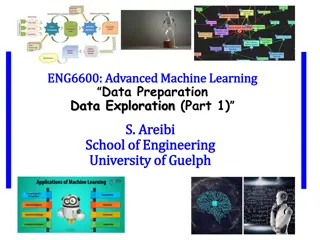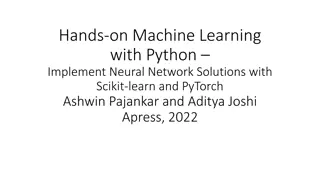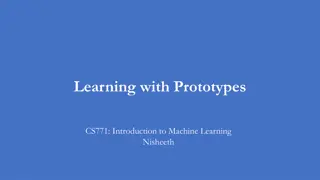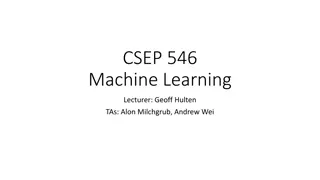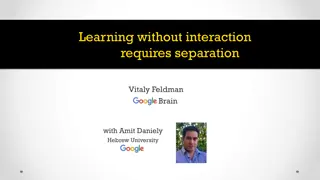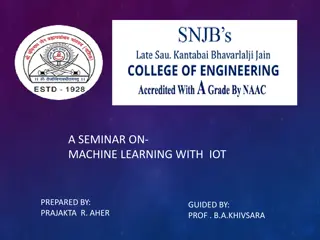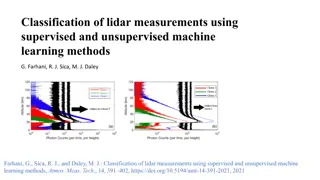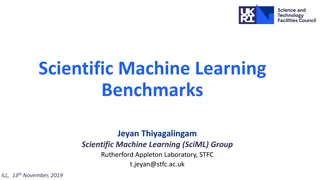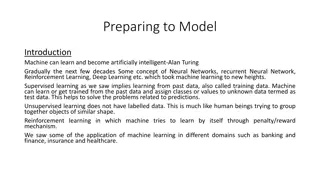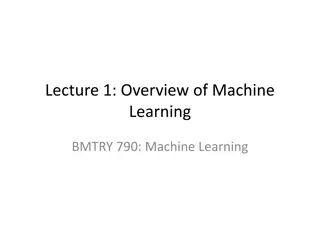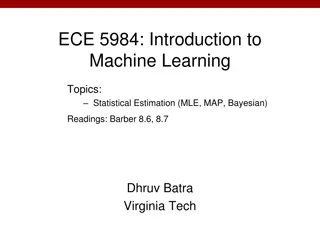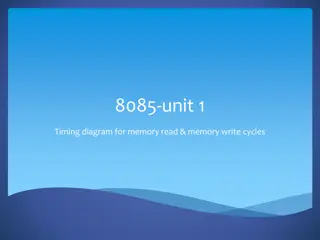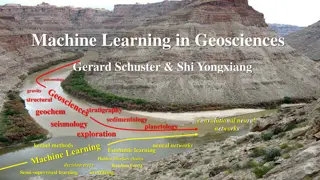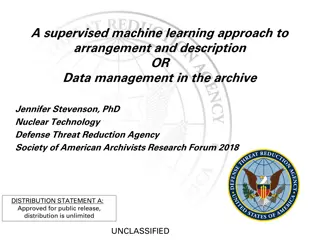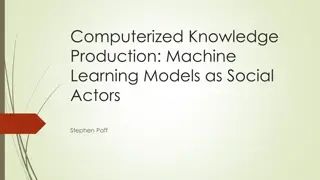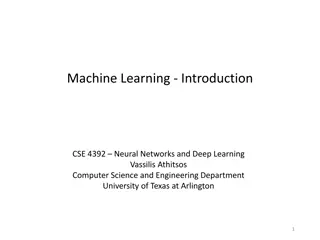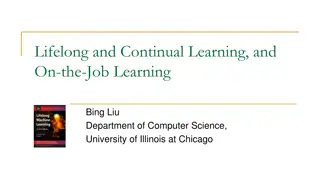Overview of Machine Learning: Concepts and Applications
This content covers the fundamentals of machine learning, including popular ML problems and algorithms, basic methodology, evaluation techniques, and the significance of learning in AI. It discusses the evolution of neural network learning, the importance of adapting to new information, and the role of AI in today's technological landscape.
Download Presentation

Please find below an Image/Link to download the presentation.
The content on the website is provided AS IS for your information and personal use only. It may not be sold, licensed, or shared on other websites without obtaining consent from the author.If you encounter any issues during the download, it is possible that the publisher has removed the file from their server.
You are allowed to download the files provided on this website for personal or commercial use, subject to the condition that they are used lawfully. All files are the property of their respective owners.
The content on the website is provided AS IS for your information and personal use only. It may not be sold, licensed, or shared on other websites without obtaining consent from the author.
E N D
Presentation Transcript
14.1 Machine Learning overview Chapter 19
What we will cover Some popular ML problems and algorithms Take Machine Learning, Data Science, NLP, Computer Vision for more Use online resources & experiment on your own We will focus on when/how to use techniques and only touch on how/why they work Basic ML methodology and evaluation Use various platform for examples & demos (e.g., scikit-learn, Weka, TensorFlow, PyTorch) Great for exploration and learning
What is learning? Learning denotes changes in a system that ... enable a system to do the same task more efficiently the next time Herbert Simon Learning is constructing or modifying representations of what is being experienced Ryszard Michalski Learning is making useful changes in our minds Marvin Minsky
Why study learning? Discover new things or structure previously unknown Examples: data mining, scientific discovery Fill in skeletal or incomplete specifications in a domain Large, complex systems can t be completely built by hand & require dynamic updating to incorporate new info. Learning new characteristics expands the domain or expertise and lessens the brittleness of the system Acquire models directly from data rather than by manual programming Build agents that can adapt to users, other agents, and their environment Understand and improve efficiency of human learning
AI and Learning Today 50s&60s: neural network learning popular Marvin Minsky did neural networks for his dissertation (1954) Mid 60s: replaced by paradigm of manually encoding & using symbolic knowledge Cf. Perceptrons, Minsky & Papert book showed limitations of perceptron neural networks & helped kill off NN for decades 90s: more data & processing power drove interest in statistical machine learning techniques & data mining Now: machine learning techniques & big data play biggest driver in almost all successful AI systems and neural networks are the current favorite approach seeAlso: Timeline of machine learning
Neural Networks 1960 A man adjusting the random wiring network between the light sensors and association unit of scientist Frank Rosen- blatt's Perceptron, or MARK 1 computer, at the Cornell Aeronautical Laboratory, Buffalo, New York, circa 1960. The machine is designed to use a type of artificial neural network, known as a perceptron.
AI Learning in the 1970s Marvin Minsky First, we need to understand how to program machines to be intelligent in some way, then we can take on the task of getting the to learn how to do it. Early example of learning concepts from examples and non-examples (1970)
AI timelines show Machine Learning beginning to dominate in the early 2000s One of many examples you can find online
Neural Networks 2018-2022 Google s AIY Vision Kit: an intelligent camera that can recognize objects, detect faces & emotions. Download and use a variety of image recognition neural networks to customize the Vision Kit for your own creation. Included in the box: Raspberry Pi Zero WH, Pi Camera V2, Micro SD Card, Micro USB Cable, Push Button. Currently $31.75 on Amazon
Machine Learning Successes Games: chess, go, poker Text sentiment analysis Email spam detection Recommender systems (e.g., Netflix, Amazon) Machine translation Speech understanding SIRI, Alexa, Google Assistant, Autonomous vehicles Individual face recognition Understanding digital images Credit card fraud detection Showing annoying ads
Major Machine learning paradigms (1) Rote: 1-1 mapping from inputs to stored representation, learning by memorization, association-based storage & retrieval Induction: Use specific examples to reach general conclusions Clustering: Unsupervised discovery of natural groups in data
Major Machine learning paradigms (2) Analogy: Find correspondence between different representations Discovery: Unsupervised, specific goal not given Genetic algorithms:Evolutionary search techniques, based on survival of the fittest Reinforcement: Feedback (positive or negative reward) given at the end of a sequence of steps Deep learning: artificial neural networks with representation learning for ML tasks
Types of learning problems Supervised: learn from training examples Regression: Classification: Decision Trees, SVM Unsupervised: learn w/o training examples Clustering Dimensionality reduction Word embeddings Reinforcement learning: improve performance using feedback from actions taken Lots more we won t cover Hidden Markov models, Learning to rank, Semi-supervised learning, Active learning,
One of many images of ways to organize types of machine learning you can find online
Supervised learning Given training examples of inputs & corresponding outputs, produce correct outputs for new inputs Two important scenarios: Classification: outputs typically labels (goodRisk, badRisk); learn decision boundary to separate classes Regression: aka curve fitting or function approxima- tion; Learn a continuous input-output mapping from examples, e.g., for a zip code, predict house sale price given its square footage
Unsupervised Learning Given only unlabeled data as input, learn some sort of structure, e.g.: Clustering: group Facebook friends based on similarity of post texts and common FB friends Topic modeling: Induce N topics and words most common in documents about each Embeddings: Find sets of words whose meanings are related (e.g., doctor, hospital, drugs, nurse) Large Language Models: Predict text that might follow a given test sequence(e.g., BERT, GPT-3)
Machine Learning ML s significance in AI has gone up and down over the last 75 years Today it s very important for AI and data science Driving ML are three trends: Cheaper and more powerful computing systems Open-source ML tools & models (e.g., Weka, scikit- learn, TensorFlow, Huggingface, SpaCy, BERT ) Availability of large amounts of data Understanding ML concepts and tools allow many to use them with success




